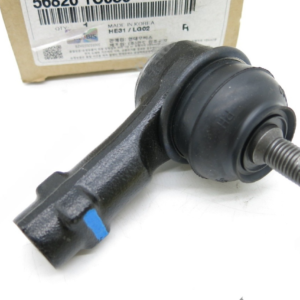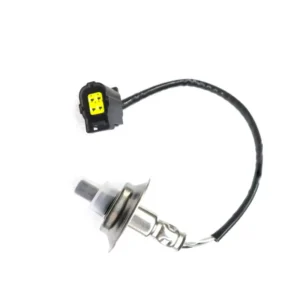**Unveiling the Oxygen Sensor: A Vital Component of Modern Engines**
In the intricate orchestra of automotive engineering, where precision and efficiency harmonize, one component stands out as a silent sentinel of performance—the oxygen sensor. While its name might not evoke immediate fascination, the oxygen sensor plays a pivotal role in ensuring optimal fuel efficiency, engine performance, and emission control in modern vehicles. Let’s delve into the depths of this unsung hero and uncover its significance in the world of automotive technology.
**Understanding the Essence: What is an Oxygen Sensor?**
Nestled within the exhaust system of most internal combustion engines, the oxygen sensor, also known as an O2 sensor, is a small but mighty device tasked with monitoring the oxygen content in the exhaust gases. This information is relayed to the engine control unit (ECU), enabling it to adjust the air-fuel mixture for optimal combustion efficiency.
**The Significance of Oxygen Monitoring**
In the delicate dance of combustion within an engine, maintaining the ideal air-fuel ratio is crucial for achieving efficient combustion and minimizing harmful emissions. The oxygen sensor serves as the eyes and ears of the engine, providing real-time feedback on the oxygen levels in the exhaust gases. This feedback loop allows the ECU to make precise adjustments to fuel delivery, ensuring that the engine operates at peak efficiency while keeping emissions in check.
**The Silent Observer: How Does an Oxygen Sensor Work?**
Despite its unassuming appearance, the oxygen sensor employs sophisticated technology to fulfill its role. Most modern vehicles are equipped with a narrow-band oxygen sensor, which consists of a ceramic or zirconia element coated with a thin layer of platinum. When exposed to the exhaust gases, the oxygen sensor generates a voltage signal based on the oxygen content in the exhaust stream.
In a stoichiometric air-fuel ratio (typically around 14.7:1 for gasoline engines), the oxygen sensor produces a voltage signal that oscillates between rich (high voltage) and lean (low voltage) conditions. The ECU interprets these voltage fluctuations and adjusts the fuel injection pulse width accordingly to maintain the optimal air-fuel ratio.
**The Unseen Benefits: Advantages of Oxygen Sensors**
Beyond their primary role in regulating air-fuel mixture, oxygen sensors offer several benefits that contribute to the overall performance and efficiency of modern engines:
1. **Improved Fuel Efficiency:** By continuously monitoring the air-fuel ratio and making precise adjustments to fuel delivery, oxygen sensors help optimize fuel combustion, leading to improved fuel efficiency and reduced fuel consumption.
2. **Enhanced Engine Performance:** Maintaining the optimal air-fuel ratio ensures that the engine operates at peak performance, delivering smoother acceleration, improved throttle response, and overall drivability.
3. **Emission Control:** Oxygen sensors play a crucial role in reducing harmful emissions by ensuring that the engine operates within its emissions compliance limits. This helps vehicles meet stringent emissions regulations and contributes to cleaner air quality.
4. **Diagnostic Capabilities:** Oxygen sensors also aid in onboard diagnostics by detecting anomalies in the air-fuel mixture, such as rich or lean conditions, which can indicate underlying engine problems or issues with other engine components.
**Looking Ahead: The Evolution of Oxygen Sensing Technology**
As automotive technology continues to advance, the role of oxygen sensors remains integral to achieving greater efficiency, performance, and environmental sustainability. Future innovations in oxygen sensing technology may include the development of wide-band sensors capable of providing more detailed information about the air-fuel mixture, as well as advancements in sensor materials and coatings to enhance durability and reliability.
Furthermore, as vehicle electrification becomes more widespread, oxygen sensors will continue to play a crucial role in optimizing the efficiency of internal combustion engines in hybrid and plug-in hybrid vehicles, as well as in ensuring the proper operation of emissions control systems in combustion engine-powered vehicles.
**In Conclusion: The Unsung Hero**
In the intricate tapestry of automotive engineering, where every component plays a vital role, the oxygen sensor stands out as a silent guardian of efficiency and performance. Its unassuming presence belies its critical importance in ensuring that modern engines operate at their peak, while minimizing their environmental footprint.
So, the next time you start your car and embark on a journey, take a moment to appreciate the unsung hero working quietly beneath the surface—the humble oxygen sensor.
In stock (can be backordered)
$88,855.34
**Unveiling the Oxygen Sensor: A Vital Component of Modern Engines**
In the intricate orchestra of automotive engineering, where precision and efficiency harmonize, one component stands out as a silent sentinel of performance—the oxygen sensor. While its name might not evoke immediate fascination, the oxygen sensor plays a pivotal role in ensuring optimal fuel efficiency, engine performance, and emission control in modern vehicles. Let’s delve into the depths of this unsung hero and uncover its significance in the world of automotive technology.
**Understanding the Essence: What is an Oxygen Sensor?**
Nestled within the exhaust system of most internal combustion engines, the oxygen sensor, also known as an O2 sensor, is a small but mighty device tasked with monitoring the oxygen content in the exhaust gases. This information is relayed to the engine control unit (ECU), enabling it to adjust the air-fuel mixture for optimal combustion efficiency.
**The Significance of Oxygen Monitoring**
In the delicate dance of combustion within an engine, maintaining the ideal air-fuel ratio is crucial for achieving efficient combustion and minimizing harmful emissions. The oxygen sensor serves as the eyes and ears of the engine, providing real-time feedback on the oxygen levels in the exhaust gases. This feedback loop allows the ECU to make precise adjustments to fuel delivery, ensuring that the engine operates at peak efficiency while keeping emissions in check.
**The Silent Observer: How Does an Oxygen Sensor Work?**
Despite its unassuming appearance, the oxygen sensor employs sophisticated technology to fulfill its role. Most modern vehicles are equipped with a narrow-band oxygen sensor, which consists of a ceramic or zirconia element coated with a thin layer of platinum. When exposed to the exhaust gases, the oxygen sensor generates a voltage signal based on the oxygen content in the exhaust stream.
In a stoichiometric air-fuel ratio (typically around 14.7:1 for gasoline engines), the oxygen sensor produces a voltage signal that oscillates between rich (high voltage) and lean (low voltage) conditions. The ECU interprets these voltage fluctuations and adjusts the fuel injection pulse width accordingly to maintain the optimal air-fuel ratio.
**The Unseen Benefits: Advantages of Oxygen Sensors**
Beyond their primary role in regulating air-fuel mixture, oxygen sensors offer several benefits that contribute to the overall performance and efficiency of modern engines:
1. **Improved Fuel Efficiency:** By continuously monitoring the air-fuel ratio and making precise adjustments to fuel delivery, oxygen sensors help optimize fuel combustion, leading to improved fuel efficiency and reduced fuel consumption.
2. **Enhanced Engine Performance:** Maintaining the optimal air-fuel ratio ensures that the engine operates at peak performance, delivering smoother acceleration, improved throttle response, and overall drivability.
3. **Emission Control:** Oxygen sensors play a crucial role in reducing harmful emissions by ensuring that the engine operates within its emissions compliance limits. This helps vehicles meet stringent emissions regulations and contributes to cleaner air quality.
4. **Diagnostic Capabilities:** Oxygen sensors also aid in onboard diagnostics by detecting anomalies in the air-fuel mixture, such as rich or lean conditions, which can indicate underlying engine problems or issues with other engine components.
**Looking Ahead: The Evolution of Oxygen Sensing Technology**
As automotive technology continues to advance, the role of oxygen sensors remains integral to achieving greater efficiency, performance, and environmental sustainability. Future innovations in oxygen sensing technology may include the development of wide-band sensors capable of providing more detailed information about the air-fuel mixture, as well as advancements in sensor materials and coatings to enhance durability and reliability.
Furthermore, as vehicle electrification becomes more widespread, oxygen sensors will continue to play a crucial role in optimizing the efficiency of internal combustion engines in hybrid and plug-in hybrid vehicles, as well as in ensuring the proper operation of emissions control systems in combustion engine-powered vehicles.
**In Conclusion: The Unsung Hero**
In the intricate tapestry of automotive engineering, where every component plays a vital role, the oxygen sensor stands out as a silent guardian of efficiency and performance. Its unassuming presence belies its critical importance in ensuring that modern engines operate at their peak, while minimizing their environmental footprint.
So, the next time you start your car and embark on a journey, take a moment to appreciate the unsung hero working quietly beneath the surface—the humble oxygen sensor.
| Weight | 0.25 kg |
|---|---|
| Warehouse | Inventory at warehouse 2 |




Get E-mail updates about our latest products and special offers.
Sensors and More is Jamaica’s ultimate online auto parts store. Established in 2020, we specialize in genuine electrical parts for Japanese, Read more…
Reviews
There are no reviews yet.